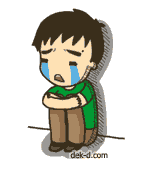ขอช่วยแปล ภาษาอังกฤษ เป็น ภาษาไทย
ตั้งกระทู้ใหม่
Modern Dance, tradition of theatrical dance unique to the 20th century. Modern dance flourished in areas that lacked strong ballet traditions, such as in the United States where ballet companies were imported from Europe. Although modern dance originated in Europe, by 1930 the United States had become the center for dance experimentation. Many early modern dances were miniatures—solos of highly compressed effect. They were unlike anything known, for dance at that time was dominated by late 19th-century ballets, which were characterized by large casts, a great variety of dance numbers, and spectacular scenic effects. But ballet itself was not always so monumental in scale, and just as ballet has evolved over the centuries as a changing tradition, so also has modern dance during its shorter period of existence.
Modern dance, having begun as a reaction against ballet, is perhaps more easily defined by what it is not than by what it is, and it is often defined in contrast to ballet. Certain broad traits, however, can be observed in much of the enormously varied modern dance that has been created in the 20th century.
In modern dance, the tendency is for one artist to act as both choreographer (see Choreography) and performer—and frequently also as scenic, costume, and lighting designer. During the last 300 years of ballet, in contrast, choreographers have seldom continued to dance when they were at the height of their choreographic achievements. Unlike ballet choreographers, who rely on a language of codified steps, modern dancers create their own conventions, or dance language; thus, they usually find it a practical necessity to both choreograph and perform.
Modern dance, having begun as a reaction against ballet, is perhaps more easily defined by what it is not than by what it is, and it is often defined in contrast to ballet. Certain broad traits, however, can be observed in much of the enormously varied modern dance that has been created in the 20th century.
In modern dance, the tendency is for one artist to act as both choreographer (see Choreography) and performer—and frequently also as scenic, costume, and lighting designer. During the last 300 years of ballet, in contrast, choreographers have seldom continued to dance when they were at the height of their choreographic achievements. Unlike ballet choreographers, who rely on a language of codified steps, modern dancers create their own conventions, or dance language; thus, they usually find it a practical necessity to both choreograph and perform.
#ขอช่วยแปลภาษา #ขอบคุณค่ะ /span>

แสดงความคิดเห็น